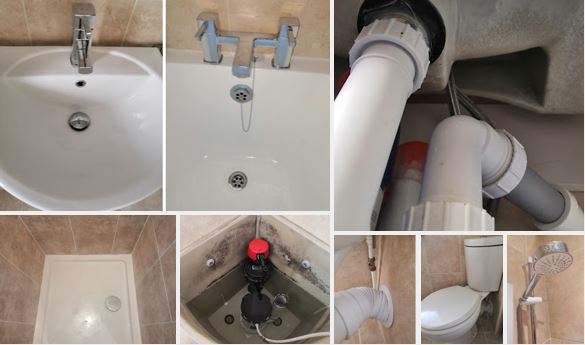What can cause a leak in the bathroom?
It will likely not surprise you that bathroom leaks are some of the most common leaks that occur in properties. In fact they feature in the top 10 water leak causes report we did, directly and indirectly.
Clearly, when you think about water leaks, plumbing leaks are a big part of that and very few places in the house have as many potential plumbing fittings and fixtures as your bathroom. This can obviously include hot water leaks, cold water leaks, waste water leaks, sewage leaks and various other bathroom leaks.
As you’d therefore expect, we are very experienced in plumbing leak detection and the various tools and techniques to find them, even in hidden locations. On that, we have an guide to why to use us rather than a local plumber for water leaks.
We’re expecting that you can guess most (if not all) of the main culprits but each has it’s own challenges, which we will go through below. Let’s start with the one the bathroom was named after in the first place!…
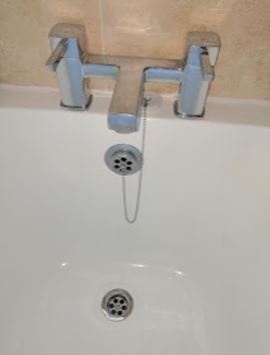
Bath Leaks
Perhaps surprisingly, when looking at the subject of bathroom leaks, leaks from your bath are not the most common type of leak you will see. That’s not to say that they don’t happen, it’s just that some of the other things on this list are a bit more common.
So where are the places that your bath might leak?
- Cold Water Pipe leak to bath – most commonly copper or push-fit (tap or mixer)
- Hot Water Pipe leak to bath – also likely to be copper of push fit (tap or mixer)
- Tap Leak – a failure in the mechanism or simply a broken tap
- Waste water leak via plug hole – usually plastic
- U-bend / trap leak – related to the previous point
- Waste water leak via overflow – perhaps the least common on this list
- Leak in the seal around bath – often silicone
- Hairline Crack Leak in Bath – from damage or wear & tear
- Other causes – not directly related to a leak (more on that later)
The thing that varies with each different bath is how they are fitted, placed (in a corner, against a wall, freestanding etc) including fixtures and fittings around them – for example tiling, bath panels etc. Bathtubs are something that feature in our list of the top five things that, if they break, leak water in your property. As you can see from the list above, there are several parts to that.
In some instances, bath panels are easily removable to access the area under and around the bath. This can provide a lot of useful information and readings to check for bathroom leaks. However, in some properties, this may not be easily accessible, which makes the trace and access process trickier (not impossible though!). Next on the list of bathroom leaks is…
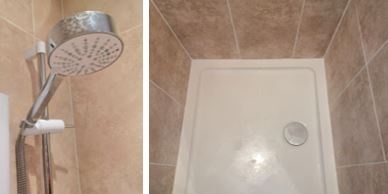
We have an interesting article you might find useful that looks at how much water do items use or hold, including things in your bathroom and other items from around the house. See also our leak detection tips article.
Shower Leaks
One of the most common bathroom leaks that we see are shower leaks. This is, in part, because when you compare to baths for example. Showers are often less contained, involve more movement / knocks etc and water splashes around much more. That said, when looking at what causes shower leaks, there are certainly similarities with baths also. Clearly showers can be fed from either a direct hot water source or they can be fed by cold water to an electric shower too.
Here are the main locations of bathroom leaks in showers…
- Cold Water Pipe feed leak to the shower – if it is an electric shower (or mixer)
- Hot Water Feed leak to shower – only if it is fed that way, not electric
- Waste Water leak via plug hole – usually plastic pipework
- Shower Trap Leak – although these happen they are not that common
- Leak from Shower Fittings – the specific plumbing connecting to the shower
- Leak in Shower Seal – like on a bath but more common (can be very small)
- Hairline Crack in Shower Tray – from impact or weakening over time
We have a more detailed article about a shower leaking through ceilings and shower waste leaks
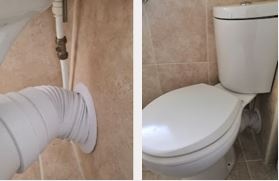
Toilet Leaks
Another common bathroom leak is a toilet leak (or very occasionally bidet leaks). Toilet leaks are somewhat different to some of the others on this list as you will see, mainly due to the mechanisms of the toilet but also the pressure that they can exert (how much water they flush quickly) on plumbing fixtures. Here are sources of toilet leaks…
- Cold Water Leak feed to Toilet – the water feed to fill the cistern for the flush
- Leak from Cistern on Toilet – less common, but sometimes happens
- Leak between Cistern and Toilet Base – where the two connect to flush
- Leak from Faulty Toilet Mechanism – sometimes causing water to constantly run
- Crack in Toilet Base Leak – hidden hairline cracks leaking from toilet base
- Leak from Toilet Breaking from Wall – rare but can be bad leaks
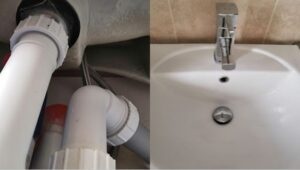
Sink leaks
Bathroom leaks involving sinks are are not the most common leaks in bathrooms but they do happen. Sinks get used frequently and often suffer from wear and tear issues as well as accidental breakages (for example dropping something in it like a bottle of aftershave or perfume). Here are some of the different types of sink leaks…
- Cold Water Tap Sink Leak – cold water feed to the cold tap or mixer tap
- Hot Water Tap Sink Leak – hot water feed to the hot tap or mixer tap
- Tap Leak – a failed mechanism for the tap or simply a breakage to tap
- Crack in the Sink Basin Leak – less common but does happen
- Waste Pipe Leak from Sink – where waste water leaves via the plug
- Broken U-bend fixing – the trap connected underneath the sink
- Sink Seal Leak – usually around the silicone around the splashback etc
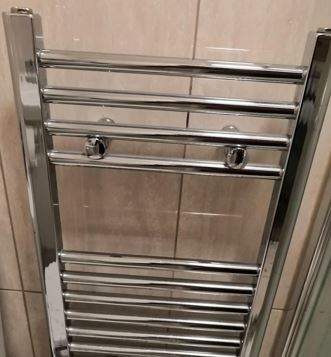
Radiator Leaks
In bathrooms there are usually radiators or, increasingly common are towel rails. These can also be a source of bathroom leaks much like radiator leaks in the rest of the property. Examples of leaks include…
- Leak in Central Heating Pipes to Radiator – quite a common leak in connections
- Leak in the Radiator Valve – related to the previous point, especially older valves
- Leak from the Radiator Itself – more common on older radiators
- Leak from Radiator Bleed Point – either from them failing or not being closed

Other Bathroom Leaks
There are a few other potential causes of bathroom leaks, including…
- General connections between pipes, especially waste pipes
- Connections to the soil pipe from other waste pipes
- Leaks from above the bathroom, for example tank in loft
- Joints between plastic push-fit pipe connections and copper pipes
- Leaks caused from breaks in tiles our grout (from general water splashes)
- Leaks from damaged wet wall panel fittings
Challenges with Bathroom Leaks
Bathroom leaks or en-suite bathroom leaks do have challenges that are more common than in other rooms of the house (they can happen elsewhere too) but they are worth bearing in mind.
These include:
- Quite often there are fitted units, such as vanity units which can often be inaccessible or ‘hide’ leaks in places where people cannot see them easily.
- Related to the previous point, the fact that tiles are far more commonly involved. Clearly this again makes seeing underneath them to access possible leaks challenging. It also means that sometimes there are several layers before you can access plumbing etc. That said, we have specialist leak detection equipment that can check for moisture or leaks in a non destructive way.
- Following on from that, quite often bathrooms have luxurious and expensive fittings, with something like marble tiles being a good example. They are not easy to move and expensive to replace.
- Leaks in bathrooms involve waste and sewerage contaminated water more often. This means that there are sanitisation and odour challenges. Clearly it is a more unpleasant bathroom leak.
- Bathrooms are commonly found upstairs which can lead to a ceiling leak in the room below and potentially damage in other rooms such as kitchen and living rooms etc too.
- On the flip side, in some respects (especially bearing in mind about tiles etc) you can often trace and access a bathroom leak more easily from below. It is an option, depending on the construction of the property etc.
- This in turn can mean that you get leaks between floors where they may not be initially seen. Also, depending on the property construction, these spaces may cause water leaks to ‘travel’ horizontally for some distance meaning that, where you see the leak effect, may not be in the same place as the actual leak.
- They can be very slow leaks that accumulate damage over time. For example, if you have a very small hairline crack in a shower tray or in the seal around it, you will unlikely spot it immediately. Always be on the lookout for the signs of a water leak around (and below) bathrooms.
- Because hot and cold water is often involved in leaks, this means that the pipework, fixtures and fittings are subject to expansion and contraction which, over time can cause wear and tear and, in some instances, mean that leaks may only manifest themselves when (for example) something is expanded.
Bathroom Leak Insurance Claims
Hopefully all the information above helps to highlight why bathroom leak insurance claims are fairly common and one of the places that leak detection is both common and, in many situations, more complex due to things like fixtures and fittings (including plumbing) being less accessible.
That is why leak detection specialists are trained and have professional leak detection equipment to help maximise the chances of finding your water leak. If you have a bathroom leak or leak in any other part of your property, get in touch with us and our friendly team will help.
On the subject of water, you may find our guide to pure water interesting and informative. Similarly, our explanation of the process of how to locate a leak between meter and house.
What happens if water gets under tiles?

If you have a water leak that is under tiles in your bathroom or causes water to leak into the area underneath tiles, this can be a challenge for a few reasons. Firstly, as we are sure you know, tiles cannot generally be uplifted easily and replaced without causing damage (especially where there is strong adhesive) and also, tiles can act as a vapour barrier trapping water under them which can contribute to further damage.
Does water leak through tile grout?

Water can leak through grout in tiles, especially if there is water present for some time. The other thing that can add to this, which is fairly common, is that if there are any cracks or gaps in your grout, they will let water through too. In fact, exposure to water from a water leak can ironically contribute to this, in particular if wooden flooring is underneath, expanding from moisture.
Are bathroom leaks common?

Bathroom leaks are one of the most common type of water leak that we deal with. Because of the sheer number of plumbing fixtures in bathrooms, there are a lot of potential locations for leaks to occur. This can include bath leaks, toilet leaks, sink leaks, shower leaks, radiator leaks and more. These can be tricky to locate, especially in tiled bathrooms and specialist equipment is certainly beneficial.
